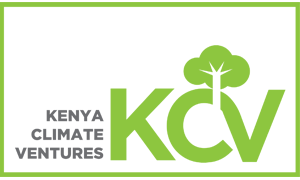The Sustainable Development Goals, widely known as SDGs were developed at the United Nations Conference that was held in Rio de Janeiro, Brazil in the year 2012.
In the year 2015, through a vote, the United Nations chose objectives applicable universally to transform the world. These are a collection of 17 intertwined global goals/target and which have been adopted by the United Nations Member States, providing a shared blue print to achieve a better and more sustainable future for all.
The first goal of the SDGs is: No Poverty. Under this goal, there are set targets to be achieved by 2030 which include:
Target 1.1. This calls to eradicate extreme poverty for all people everywhere, currently measured as people living under $ 1.25 a day. According to the United Nations, the number of people living in extreme poverty declined from 36 per cent in 1990 to 10 per cent in 2015, but the pace of change is decelerating and the COVID 19 crisis risks reversing decades of progress in the fight against poverty. A report from the same source indicates that more than 700 million people still live under extreme poverty and struggle to meet the basic needs such as water and sanitation, health, education among others, with developing countries being at the highest risk.
Read Also: KCV clients receive co-financing from KKFC
Target 1.2 includes reducing at least by half the proportion of men, women and children of all ages living in poverty in all its dimensions according to national definitions. This means that this goal should or will reduce poverty by 50% come 2030.
Target 1.3 of SDG 1 is to implement nationally appropriate social protection systems and measures for all by 2030, including floors and achievement of substantial coverage of the poor and vulnerable.
Target 1.4 states that all men and women, particularly the poor and vulnerable should have equal rights to economic resources by 2030. This also includes gaining access to basic services, ownership and control of land and other forms of property, inheritance, natural resources, appropriate new technology and financial services, micro finance included.
Target 1.5 stipulates that the resilience of the poor and those in vulnerable situations should be build. This includes reduction of their exposure and vulnerability to climate-related extreme events and other economic, social and environmental shocks and disasters.
Target 1.a seeks to ensure significant mobilization of resources to end poverty. This target is set to ensure significant mobilization of resources from a variety of forces, including through enhanced development cooperation, in order to provide enough and predictable means for the developing countries, in particular least developed countries, to implement programs and policies to end poverty in all its dimensions.
Target 1.b seeks to create sound policy frameworks at the national, regional and international levels, based on pro-poor and gender-sensitive development strategies, to support accelerated investment in poverty eradication actions.
According to an article by the Borgen Magazine on “Looking at Solutions to Poverty in Kenya”, Kenya is among many other sub-Saharan African nations that has felt the effects of rampant poverty for generations. However, there has been positive signs of relief as the percentage of Kenyans living under the international poverty line (characterized in 2011 as US$1.90 per day) decreased from 46.8% to 36.1% between 2005-06 and 2015-16 as reported by The Borgen Project.
Read also: How Kenya Climate Ventures prioritizes Youth in Sustainability Investments
The Kenya Climate Ventures (KCV) Limited plays a critical role in improving livelihoods in Kenya by providing targeted financial and managerial assistance support to innovative, early and growth stage businesses that are investing in climate smart technologies. KCV supports the achievement of SDG 1 through:
- Investing in innovations and technologies in renewable energy, waste management and water management sectors which increases access to water and sanitation by households and communities.
- In line with target 1.4, increased focus on marginalized communities and markets which increase vulnerable communities’ access to resources such as affordable finance, capacity development support as well as new technologies and products. In addition, by pursuing inclusion in KCV investment thesis and processes and trickling this down to KCV- supported enterprises, the benefits of inclusion accrue to the marginalized communities.
- In line with target 1.5, supporting enterprises that are investing in technologies and sectors that are climate smart which contributes to the resilience of households and communities.
- By providing finance, business development support and investment brokerage to enterprises, these enterprises are able to scale and provide more opportunities to the communities in the form of employment; creation of, and increase in positive synergies with the local MSMEs as well as transformation of the local market systems.
While Kenya is making great strides in poverty alleviation, there is still room for advancement and concessional investors such as KCV to support efforts of achieving the SDGs.
Image courtesy












